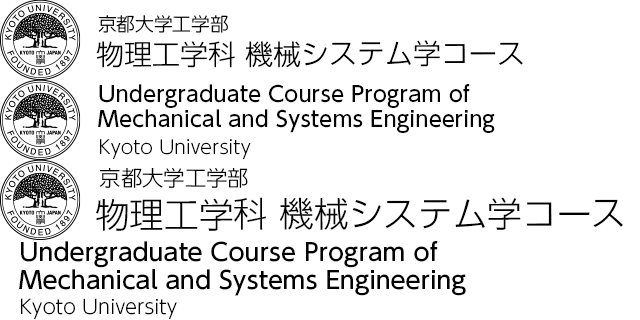History
On June 18, 1897, Kyoto Imperial University was established under an Imperial edict. On the same day, a system of university governance was promulgated. First to be opened was the College of Science and Engineering, offering 21 courses including three in mechanical engineering. This was the beginning of the Faculty of Mechanical Engineering and of Kyoto University. In July 1914, the College of Science and Engineering was divided into the College of Science and the College of Engineering, the latter offering 26 courses in five departments. In 1919, the College of Engineering was renamed the Faculty of Engineering.
After World War II, in 1947, the imperial university governance system was replaced by the national university governance system; accordingly, Kyoto Imperial University was renamed Kyoto University. In 1949, when the National School Establishment Law was enacted, Kyoto University became a national university under the new university system as defined in the School Education Law. At that time, the Faculty of Engineering offered 64 courses in 11 departments, including seven courses in mechanical engineering.
As Japan's industrial sector entered a period of rapid economic growth in the mid-1950s, the national government adopted a policy of promoting science and technology and improving scientific and engineering studies in formal education. Accordingly, the Faculty of Engineering underwent major expansion and reorganization, including the establishment of new departments. At the same time, remarkable technical innovations in the field of mechanical engineering in those days led to greater demand for engineers. Against this backdrop, the Department of Precision Engineering was established in 1960 at Kyoto University as an academic department particularly focused on research and education in production and control among many branches of mechanical engineering. Meanwhile, rapid engineering developments expanded the need for advanced research into mechanical efficiency enhancement and design for automation. In response, in 1962, the Department of Mechanical Engineering II was established as a new academic department offering six courses focusing on the basic principles of mechanical engineering.
Later, the expanded and diversified industrial sector expressed strong demands for environment-friendly development of mechanical engineering and exploration of new fields free from conventional disciplinary barriers. Accordingly, the mechanical engineering-related Departments underwent expansion and reorganization in 1975, to accelerate new developments in research and education in mechanical engineering and train researchers and engineers capable of creative technological development. As a result, those departments underwent renewal as the Department of Mechanical Engineering (eight chairs), the Department of Precision Engineering (six chairs) and the Department of Engineering Science (five chairs).
Dictated by recent advances in science and technology and responding to greater need for improvement in advanced basic research and exploration of new academic fields, Kyoto University commenced a major reorganization in 1993, shifting focus in research and education from undergraduate to graduate levels.
The Faculty of Engineering was also reorganized. The formerly mechanical engineering-related Departments (Departments of Mechanical Engineering and Engineering Science) and the Department of Precision Engineering were regrouped with the Departments of Aeronautical Engineering, Metallurgy, Metal Science and Technologyand Nuclear Engineering, as seven physics-related departments forming the School of Engineering Science. The academic system was also reformed so that students were first admitted to the School of Engineering Science, attending common lectures in basic subjects in their first and second years and choosing their area of specialization according to their future career orientation on starting their third year, in which they took more specialized courses.
In line with the above reorganization, the Mechanical and Systems Engineering Course, which corresponds to the conventional mechanical engineering departments and the Department of Precision Engineering, and the Energy Science Course, which corresponds to the Department of Applied Energy Science and Engineering or Graduate School of Energy Science, for which details are mentioned later, were established.
